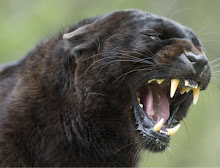
The Playboy Bunny was born on a cold February night in 1960, as
the most curious -- and, arguably, most fetching -- attraction at
the newly christened Playboy Club in Chicago. Indeed, when the
key club had first solicited prospective employees the year
before, the ad that was placed in the Chicago Tribune sought,
"the 30 most beautiful girls in Chicagoland."
More than acting simply as cocktail waitresses, hostesses and
servers at Playboy Clubs around the world over the course of a
quarter-century, the Playboy Bunny became a cultural icon -- one
that represents not only the corporate identity of Playboy
Enterprises, Inc., but likewise the persona of a lifestyle that
combines entertainment, sophistication, sexuality and fun. In the
first 20 years alone, more than 25,000 women donned rabbit ears
and cottontails, many of them working their way through college
by way of the job's legendary ample pay and flexible hours.
Contrary to critics who assumed that the Playboy Bunny mystique
was more about being an ornament than working, the job actually
required considerable skill. Ironically, Playboy founder Hugh
Hefner had almost personally put his waitresses in shortie
nightgowns -- a rabbit outfit, he reasoned, was too masculine an
image for the ladies of his cocktail corps. But Victor Lownes,
then the magazine's promotion director, along with other
associates convinced Hefner that he should extend onto the live
entertainment front the rabbit theme that he had so carefully
integrated into the pages of his magazine. Then Lownes'
girlfriend, a Latvian model who had appeared on Hef's TV show,
Playboy's Penthouse, convinced her mother, a seamstress, to
assemble a sample costume. No one could have guessed that a
classic was about to be sewn.
After its creation, the Bunny Costume was registered with the
U.S. Patent Office, and was ultimately displayed in the
Smithsonian Institute in Washington, D.C.
Former Playboy Bunny's include actresses Lauren Hutton, Sherilyn
Fenn and Susan Sullivan, as well as rock star Deborah Harry. But
perhaps the most famous Bunny may have also been the most
infamous: Feminist Gloria Steinem went undercover as a cottontail
in 19TK to write an expose for Show magazine all about life in
the Bunny hutch. But guess who ironically got the last laugh!
Although the controversial article was intended as a criticism of
the Playboy Bunny in particular and Hugh Hefner's empire in
general, the publicity it generated went on to establish the
Playboy Bunny even more firmly as a singular American icon.
Article Complete / http://www.petcaretips.net/playboy-bunny.html


No comments:
Post a Comment